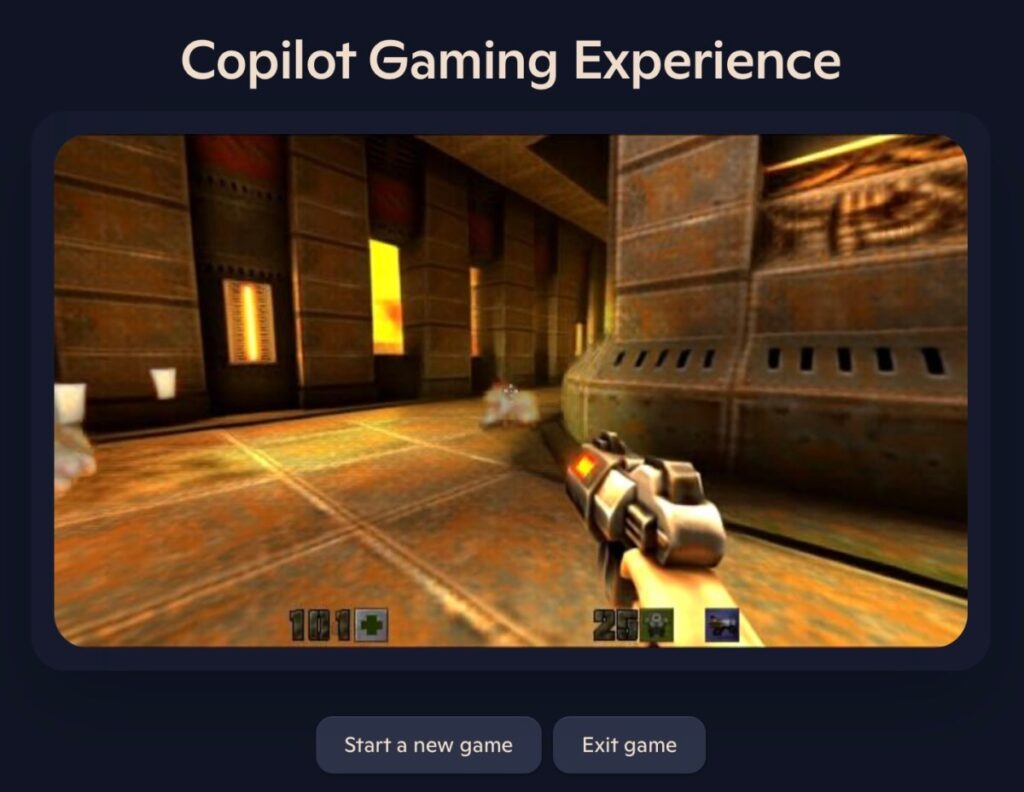Microsoft Dives into Gaming with Quake II and AI Tech Demo
Microsoft has recently launched an intriguing browser-based playable version of the classic video game Quake II. This new endeavor serves as a tech demonstration for its Copilot AI platform, providing gamers a unique, albeit limited, gaming experience. While the company acknowledges that this isn’t the same as enjoying a meticulously crafted game, the demo opens a window into the future of AI in gaming.
Try It Yourself!
If you’re curious, you can hop into the demo yourself! Simply use your keyboard to navigate a single level of Quake II for a brief few minutes before hitting the time limit. It’s a unique opportunity to experience AI in action and see how it interacts with a classic game environment.
The Brains Behind the Operation
In a recent blog post, Microsoft researchers shed light on their new Muse AI models for video games. These models allow players to directly engage with the AI using keyboard or controller inputs. The result? A chance to “play inside the model” and see immediate effects from your actions. The researchers decided to put this to the test by training their model on a Quake II level—an acquisition-related bonus from their takeover of ZeniMax.
Their enthusiasm was evident in their findings: “Much to our initial delight, we were able to play inside the world that the model was simulating.” Players can explore the environment, move the camera, jump, crouch, shoot, and even blow up barrels in a manner reminiscent of the original game.
Enjoyable or Just a Novelty?
However, don’t get too carried away—this experience is more about exploration than gameplay. Microsoft researchers have described this initiative as "a research exploration," emphasizing that it resembles “playing the model” rather than the game itself. They openly recognize some limitations, like fuzzy enemy appearances, inaccurate damage counters, and an intriguing quirk where the model forgets objects out of sight for more than 0.9 seconds.
Some users have turned this peculiarity into a fun mechanic, like summoning enemies by gazing at the ground or ‘teleporting’ around the map by shifting their view skyward. But not everyone is as thrilled. Game designer Austin Walker critiqued the approach, sharing gameplay where he ended up stuck in dark corners. He argues that this highlights a fundamental misunderstanding of how games truly function.
Understanding Game Design
Walker pointed out that successful games like Quake are a marriage of intricate code, design, 3D artistry, and rich audio. These elements shape specific gameplay experiences, including unexpected edge cases that enhance engagement. He posits that without fully reconstructing these inner workings, any AI-driven experience could fall short of providing real gameplay authenticity.
Join the Conversation
As we navigate this exciting junction of artificial intelligence and gaming, it’s clear we’re just scratching the surface. Microsoft’s experimentation with Quake II showcases innovative possibilities while also sparking important conversations about the essence of gameplay.
If you’re as excited as we are about the intersection of AI and gaming, we invite you to delve deeper into these discussions. The AI Buzz Hub team is excited to see where these breakthroughs take us. Want to stay in the loop on all things AI? Subscribe to our newsletter or share this article with your fellow enthusiasts.




